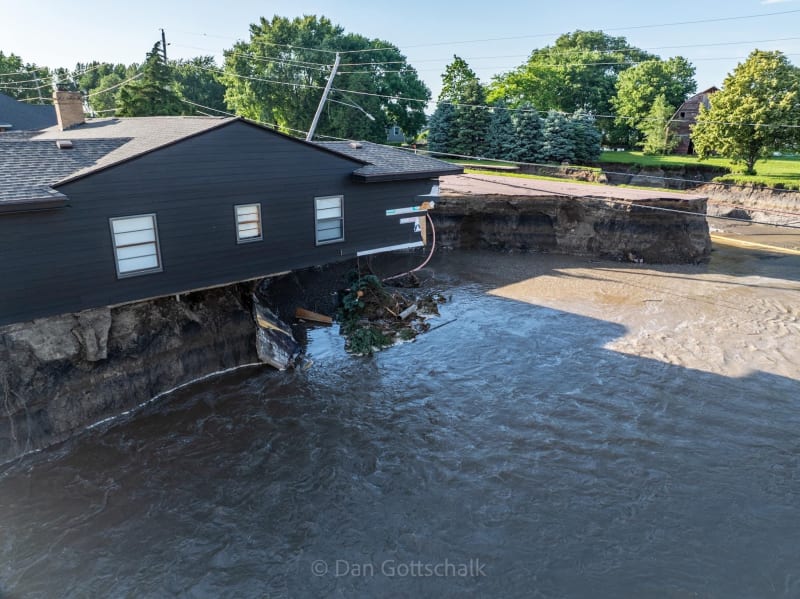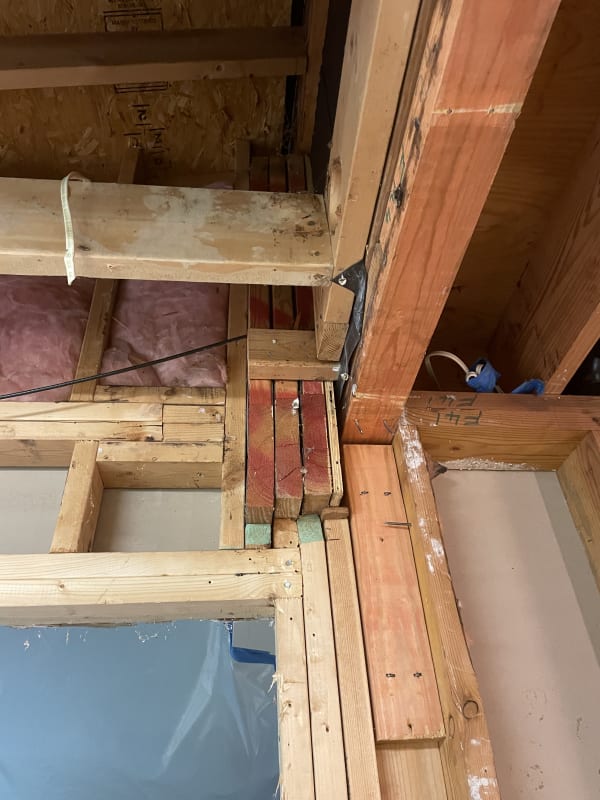-
1
- #1
I’m sure a lot of you have heard about the significant flooding occurring in northwest Iowa, Minnesota and South Dakota recently. I came across this photo of a house that had been significantly undermined by the flooding.
We’ve discussed here in the past about how we structural engineers love to follow load paths. We take the low down discrete, roof, trusses, wall, top plates, studs, and footings, etc. This photos sort of brings home the fact that Wood framing with sheathing act more like a, set of rigid boxes tied together, then individual studs, taking loads like columns.
Just an interesting photo I think.

We’ve discussed here in the past about how we structural engineers love to follow load paths. We take the low down discrete, roof, trusses, wall, top plates, studs, and footings, etc. This photos sort of brings home the fact that Wood framing with sheathing act more like a, set of rigid boxes tied together, then individual studs, taking loads like columns.
Just an interesting photo I think.


